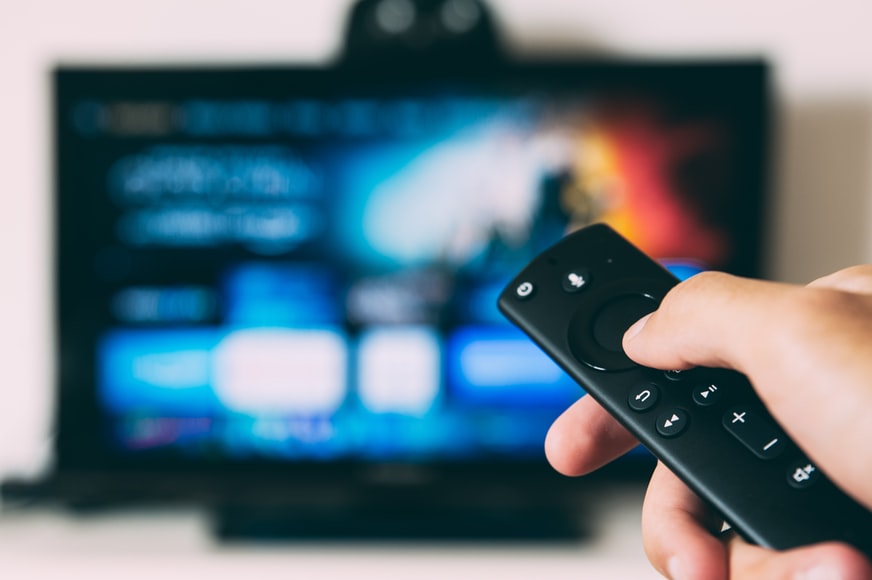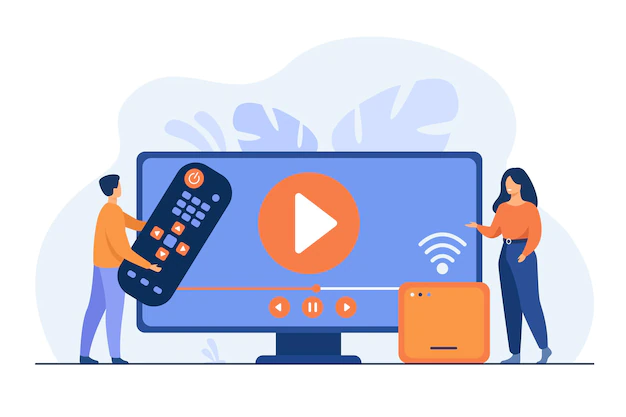
The entertainment industry has changed drastically over the last decade. The transformation isn’t just in how we use our devices today, the smartphones, televisions, and more.
But also, in how dynamic and diverse channels are offered by modern digital technology. Moving away from the bulky televisions and wired internet to sleek vibrant displays and high-speed connectivity.
Today, digital media – video and audio streaming – accounts for over 80% of the global internal traffic. This demand and jump are attributed to the diverse range of mediums available to users.
Let’s talk about two of the most popular and trending channels for digital media and video streaming – IPTV and OTT. When it comes to media streaming, the internet has transformed consumer demand and possibilities.
Nowadays, we can easily access video content on any of our gadgets and enjoy them over the internet. Both IPTV and OTT rely on internet protocols but leverage them differently.
IPTV and its intricacies
IPTV, internet-based protocol television, is a client-directed streaming service that delivers audio and video over a network. The service works on a private network and is usually managed by the service provider.
An IPTV service provider usually sets up a receiver module or set-top box connected to your monitor/ tv screen. This receiver further connects to the provider over LAN or on an ISP (internet service provider) network.
In the IPTV infrastructure, the provider saves or creates digital copies of the content and later distributes them to the users. These audio/videos are streamed as casts and transmitted to intended users.
IPTV-based systems use a complex multicast mechanism to broadcast and share content over the network. Over the network, various routers and boosters transmit and retransmit content to multiple users.
These are mostly many-to-many type distribution topology-based systems and require supporting infrastructure.
However, users can only access or connect to the IPTV network through specific devices. The ones provided by the service provider or authorized to connect to the network. Thus, limiting the usage and is dependent on hardware and installation.
OTT and its popular offerings

OTT – Over the Top, streaming is a decentralized and device-independent channel of multimedia content. Contrary to the traditional broadcasting setup, OTT utilizes the potential of the internet and connects with users.
Any and every internet-capable device can support OTT content and the consumers can enjoy their favorite shows, movies, and a lot more.
OTT streaming has grown exponentially in recent years and has significantly changed the entertainment industry. Moreover, it has also fueled the demand for internet connectivity and high-speed internet among consumers.
As the name suggests, an Over-the-Top system delivers content on demand and doesn’t require any dedicated infrastructure or hardware. This, in turn, means that any device capable of streaming video and internet connectivity is a potential recipient.
Since OTTs are platform and hardware-independent, the ISPs are not responsible for managing or controlling the content. On the other hand, the streamer (OTT provider) does not have any hardware or infrastructure to manage.
And only focus on creating, managing, and providing quality content to the subscribers. They however need to adapt and cater to the varying dynamics of devices, network bandwidths, and user experience.
OTT standing against IPTV

Both IPTV and OTT are focused on streaming content and providing user access over the internet. Both rely on using the network bandwidth and bringing together the infrastructure and content quality to a good harmony for the users.
However, both of these have a few brownie points and drawbacks. While IPTV depends on the specific hardware and infrastructure to provide content, OTT offers seamless support across all devices. Thus, making it easier to scale and adapt to advancing technologies.
Speaking of the quality, IPTV offers better control on the streaming quality and is more likely to deliver premium images and audio. Since it has a dedicated network and specifically designed hardware, it gives better control.
OTT on the other hand relies on the open network and is limited by the bandwidth of the network and streaming device capabilities. Therefore, even if the OTT provider can offer 4k quality content, the network bandwidth and device capability drive the end results and user experience.
IPTV services are often priced higher compared to the OTT alternatives, primarily due to the added cost of hardware and content. OTT on the other hand can easily scale, offer flexibility and add more users without much added operational or installation costs.
With IPTV users can also access TV-like features and live streaming from the channels, which is less likely for the OTT setup. Additionally,
In recent times, OTT has gained a lot of traction and attributed to smartphones, these numbers have grown significantly. Similarly, IPTV has evolved as a preferred option for people looking for higher quality and willing to pay for premium services.
However, both have some limitations which inhibit them from growing to their full potential. And in the coming years, it isn’t far-fetched to assume that major companies would bring together the flexibility, robustness, and quality from both. And develop a unified solution that offers the best of both worlds.
Some companies are already working on integrating them together and offering you a unified solution. If you are a fan of IPTV and are also using OTT services, you have some good options and workarounds.
If you have a Chromecast or Firestick, you could Install IPTV Smarters on Firestick. These IPTV smarters help you adapt and use the device-independent features of OTT and blend IPTV benefits on your system.
Conclusion
Are you struggling with the decision between IPTV and OTT? Are you a fan of live TV but also like streaming Netflix, YouTube, and Prime? It surely is a tough choice to make and has small compromises to make. It all depends on the things and experiences that matter to you more.
Either way, you need to consider the type of content you like, your spending, and how you like your entertainment experience. Both OTT and IPTV are technologies for the future and are disrupting the conventional means of entertainment.
Read Also:






